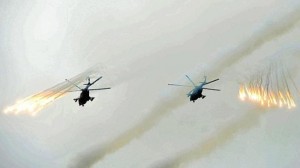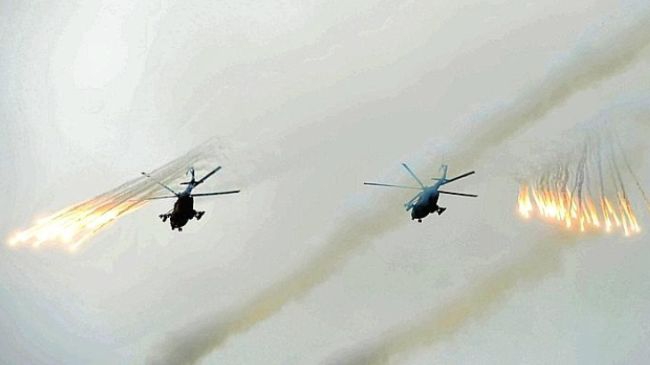 When President Barack Obama announced the rebalancing of U.S. forces toward Asia in 2011, it was often called �the pivot to the Pacific�.
When President Barack Obama announced the rebalancing of U.S. forces toward Asia in 2011, it was often called �the pivot to the Pacific�.Now it�s Russia�s turn to refocus.
Russians, like Americans, are turning their attention to a region that�s home to half the global population, several of the largest and fastest-growing economies and some of the world�s busiest ports and shipping lanes.
�The Russians are interested in demonstrating that they are a player in Asia�, Ralph Cossa of the Pacific Forum in Hawaii said. �They don�t want to be ignored�.
The Russians are sending a clear message this month with massive land and sea maneuvers in Siberia and the Sea of Japan. Its biggest military exercise since the Soviet era involves 160,000 troops, 5,000 tanks, 130 aircraft and dozens of ships. Part of it simulates a response to a hypothetical attack by forces from Japan and the U.S. - nations that occupied parts of Siberia during the Russian Civil War in 1918-20.
The maneuvers come at a time when the U.S. rebalance has been undermined by defense budget cuts that have limited exercises with allies and reduced the readiness of forces in the region.
Russia also appears to be mirroring America�s �places not bases� policy that will see U.S. forces rotate to Australia and the Philippines on training missions. Last year, Moscow opened negotiations with Vietnam to allow the Russian Pacific Fleet to resupply at Cam Ranh Bay - home to a massive Soviet naval base in the years after the fall of Saigon.
But Russia�s military has been eroding for years, and it�s uncertain whether its forces in the Pacific are as capable as their Soviet-era predecessors, Cossa said.
�I don�t think there is a lot of power left in the Russian Pacific fleet�, he said.
During the Cold War, Russian aircraft carriers berthed in Vladivostok. These days, the naval force in the far east is limited to a large missile cruiser, several destroyers and a flotilla of nuclear and diesel-electric submarines. Russian officials have signaled plans to add new Mistral-class amphibious ships, cruisers and submarines in coming years.
The build-up in Vladivostok comes as the U.S. has announced plans to base 60 percent of its Navy in the Pacific.
�Russia is moving in the Pacific direction�, said Thomas Fedyszyn, a retired Navy captain who is a national security professor at the Naval War College in Newport, R.I. �I would expect to see more Russian naval activity in the Pacific.�
Russia�s most modern warships - two new Mistral-class amphibious assault ships under construction at French shipyards - will arrive in Vladivostok next year and in 2015, Fedyszyn said.
�A lot of experts are thinking the underlying issue is Japan and the Kurile Islands�, he said.
The Mistrals are equipped for humanitarian assistance missions but are designed for amphibious assaults on small islands and can carry Russian Naval Infantry - akin to U.S. Navy SEALS. A 3,000-strong contingent of naval Infantry is stationed in Vladivostok.
Russia is also likely to send the first of its new Borei-class nuclear-powered ballistic missile submarines - now undergoing sea trials - to the Pacific next year, Fedyszyn said.
�The Russians will be slowly but steadily increasing their warfighting ability in that part of the world�, he said. �China is looking for a strategic partner since the U.S. seems to have no shortage in the region, including India. Russia doesn�t know if China is a friend or an enemy but Russia is a relatively powerful and available country that is also concerned about the American shift to the Pacific.�
During the Cope North Exercise in February, U.S. F-15s intercepted two Russian Tu-95 Bear-H bombers, capable of carrying nuclear weapons, near Guam.
Fedyszyn said he expects to see more of those flights as Russia seeks to gain respect in the Pacific.
Fiona Hill, director of the Center on the United States and Europe and a senior fellow at the Brookings Institution, described Russia�s renewed interest in the Pacific as �a response to the U.S.� but she believes the recent military maneuvers are �bluster�.
Russia is recognizing the rise of China and doing the same thing as other nations: reacting to growth in the Asia-Pacific region.
�The Russians are desperately trying to figure out how to tap into the growth there�, she said.
By Press TV
The Iran Project is not responsible for the content of quoted articles.











